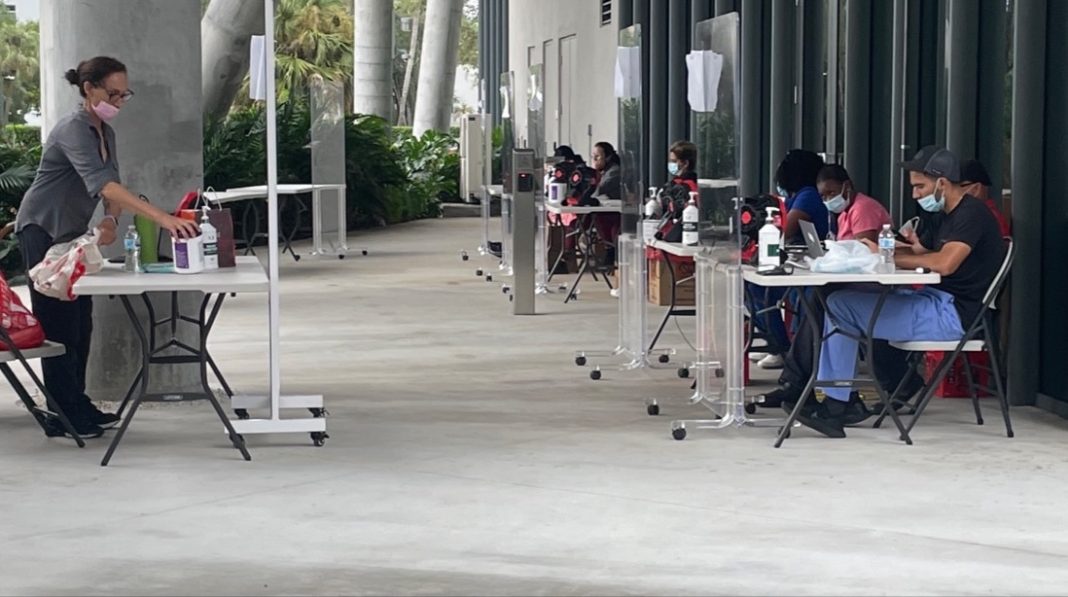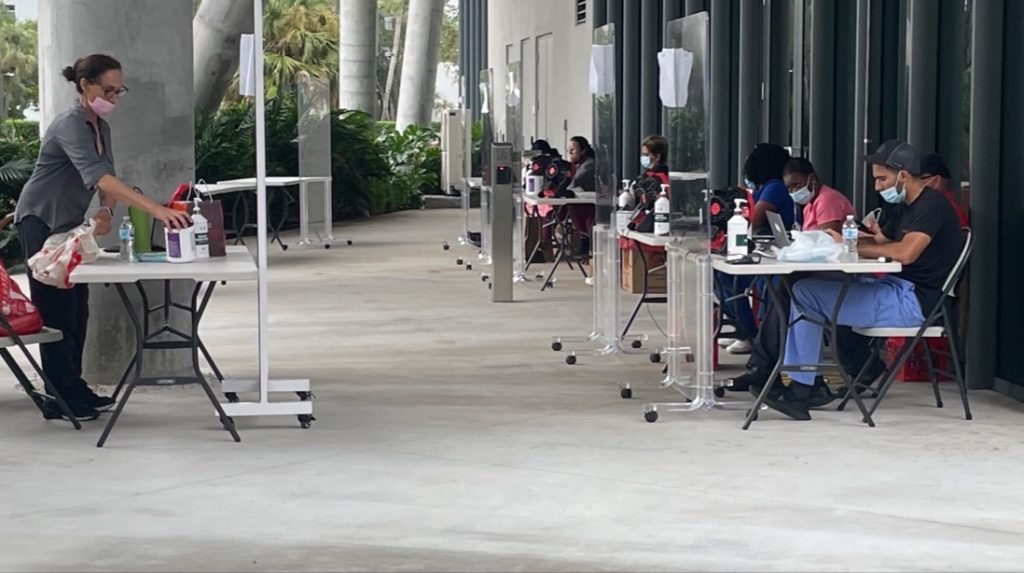
Following nearly a year of adapting COVID-19 testing to provide quicker results to more students, breath analyzers have become a regular part of the University of Miami’s on-campus COVID-19 testing protocol..
This semester, students can select to take either the breath analyzer or the PCR nasal swab test if they are required or choose to be tested for COVID-19. Testing sites at Lakeside Village, University Village and Eaton Residential College all administer breath tests while Pavia Garage uses PCR’s, which take over 24 hours to provide results.

The breath analyzers used by the university are manufactured by the TERA group, an Israeli-based diagnostics company. The university began utilizing them in October of the 2020-2021 school year to test residents of Lakeside Village and University Village.
Sophomore Simonne Dodge, who wanted a last-minute test before traveling, opted to take the breath analyzer test to ensure she got her results back in time.
“It was easier, nice to not stick something in your nose,” said Dodge, who also took the PCR nasal test.
“I don’t really know how it works, so I’m guessing it’s not as accurate as the nasal swab,” said Dodge, who is majoring in marine biology and ecology and ecosystem science and policy. “But also, COVID-19 is an airborne virus, so it makes sense that it would be in your breath.”
To take a breath test, students must scan a QR code on the breath tube which leads them to a page where their results will be posted. Students must swallow their saliva, open the tabs on both ends of the tube and blow into it three times. Then, they must close both tabs and give their test to an employee. The employee will then give it to a carrier for transport to a closed-off room with machines that scan the tests. A result is typically produced within several minutes after the sample is scanned.
While the rapid results are beneficial, some students question their accuracy.
Eli Marcus took the breath tests last semester while living in Lakeside Village and says he has no intention to do so again. When Marcus’ roommate tested positive for COVID-19, he quickly got breath tested and received a negative result. Over the next 24 hours, in quarantine as a close contact, Marcus began developing symptoms.
“I got another breath test that week and tested negative again,” said Marcus, a junior finance and management major. “Once I got my PCR on the 10th day of quarantine to get cleared, I tested positive.”
While breath tests have been found to be less accurate than PCRs, medical professionals say their speed in providing results makes them a valuable tool to getting more students tested. Erin Kobetz, vice provost for research and scholarship and the leader of the university’s COVID-19 testing, tracking and tracing efforts said the breath tests piloted in 2021 were successful.
“For regular surveillance, the breath test is an ideal method,” Kobetz said. “For detecting COVID in persons who are symptomatic and/or have a known exposure, the mid-nasal swab is more appropriate. Both tests have a critical role in keeping the university community safe.”
Kobetz defends the accuracy of the tests and said the university’s decision to utilize them is because they are quick and less invasive.
Marcus is not as confident: “I think that format of testing is asking for inconsistency,” Marcus said.
Shalanda Williams is a UM test carrier who supervises the testing site and puts each breath test into the machine for scanning. Williams takes the breath test every day to calibrate the machines and prefers it to PCR.
“It’s accurate. It’s not more accurate, but it’s accurate,” Williams said. “Out of maybe 5,600 students since we’ve been open, only three were detected red.”
To be detected red means to be found positive for COVID. UM’s official Covid dashboard shows there have been a total of 396 positive cases as of Nov. 4, from all testing sites combined.






